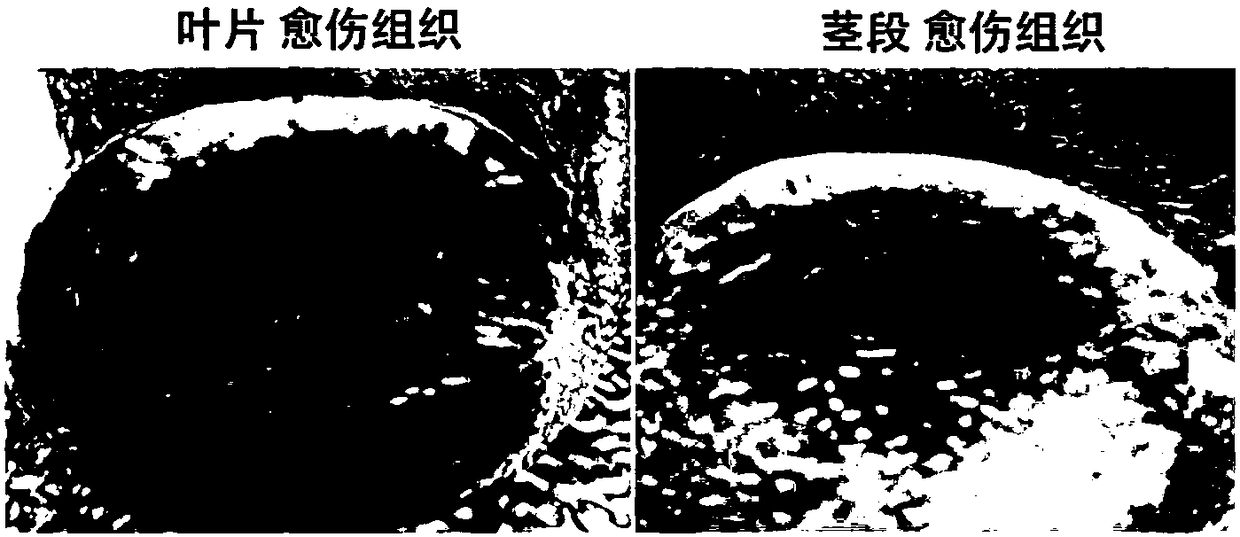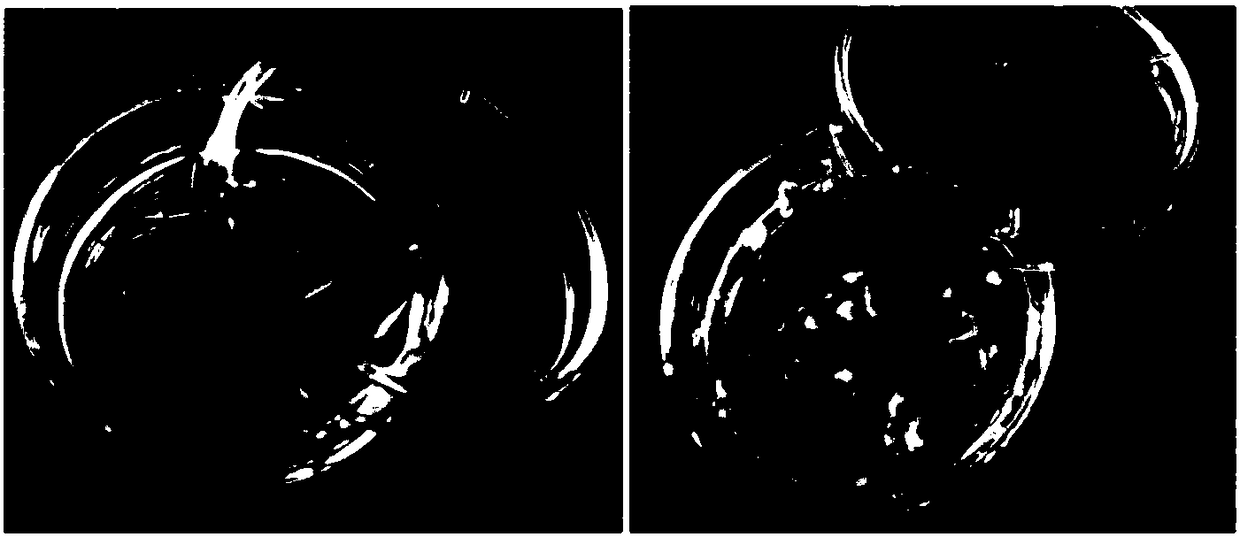Method for detecting nuclear DNA content of Camellia plant
A camellia and cell nucleus technology, which is applied in the biological field, can solve the problems of high requirements for plant materials, low success rate, and increased error variation of measurement results, so as to achieve good experimental repeatability, avoid limitations, and improve accuracy. Effect
- Summary
- Abstract
- Description
- Claims
- Application Information
AI Technical Summary
Problems solved by technology
Method used
Image
Examples
Embodiment 1
[0059] Embodiment 1 prepares the test nucleus lysis solution of camellia callus by the nucleus lysis solution of the present invention
[0060] 1. Select wild camellia (Camellia japonica) materials for disinfection treatment and callus induction
[0061] (1) Select about 15-year-old wild camellia materials planted in the Institute of Subtropical Forestry, Chinese Academy of Forestry, and cut 5 branches in good growth condition.
[0062] (2) Select 20 healthy leaves without disease spots and yellowing from the obtained branches, put them in a 500ml beaker, put them into running water and soak them for 5 minutes, then rinse them repeatedly 5 times.
[0063] (3) The leaves are cut into small pieces with a particle size substantially smaller than 1 cm with a blade.
[0064] (4) In the ultra-clean workbench, transfer the small pieces to an Erlenmeyer flask containing 200 ml of 70%-75% (volume ratio) ethanol, place it for 30 seconds, and rinse with sterile water 3 times.
[0065] ...
Embodiment 2
[0073] Example 2 Preparation of the test cell nucleus lysis solution of camellia tender leaves by WPS lysate
[0074] (1) The young leaves of wild camellia were selected, washed with tap water, dried and placed on ice.
[0075] (2) Cut the leaves into thin strips with a width of about 1 mm with a sharp scalpel blade, and place them in a plastic petri dish with a diameter of 5 cm.
[0076] (3) Add 2ml of WPB buffer (Tris 0.2M, MgCl 2 4mM, EDTA-Na2 2mM, NaCl 86mM, dithiothreitol DTT 20mM, polyvinylpyrrolidone PVP-10 1% (mass volume ratio), Triton X-100 1% (volume ratio), PH=7.5), make blade The strips are completely submerged in the lysate (e.g. figure 2 shown on the left).
[0077] (4) After shaking gently, place the culture dish on ice for 15 minutes, pass the cell nucleus lysate through a nylon filter with a pore size of 40 microns, and transfer it to a 2ml round-bottomed plastic tube.
[0078] (5) According to the volume of the filtrate, add 1 / 10 volume of propidium io...
Embodiment 3
[0079] Example 3 Flow Cytometry Result Analysis Comparison
[0080] (1) Turn on the flow cytometry instrument (BD Acurri C6), first use deionized water as a blank sample, and check the flow status of the instrument pipeline.
[0081] (2) Place the nuclei lysis solution to be tested obtained in Examples 1 and 2 on the flow cytometer, start slow loading until the total number of particles is collected to more than 80,000, and stop loading. Use the FL-2 and SSC of the flow cytometer to circle the distribution area of the nucleus, and use the distribution of the fluorescent signal to calculate the staining of the nuclear DNA (such as image 3 shown). image 3 The markers of M4, M5, M7, and M8 in (b) and (d) are the stained regions of Camellia nuclear DNA, M4 and M7 represent diploid nuclei, and M5 and M8 represent tetraploid nuclei. It can be seen by comparison that the DNA fluorescence signal distribution of the nuclei lysed by the callus is more concentrated, the background ...
PUM
| Property | Measurement | Unit |
|---|---|---|
| pore size | aaaaa | aaaaa |
| particle diameter | aaaaa | aaaaa |
| particle diameter | aaaaa | aaaaa |
Abstract
Description
Claims
Application Information
 Login to View More
Login to View More - R&D Engineer
- R&D Manager
- IP Professional
- Industry Leading Data Capabilities
- Powerful AI technology
- Patent DNA Extraction
Browse by: Latest US Patents, China's latest patents, Technical Efficacy Thesaurus, Application Domain, Technology Topic, Popular Technical Reports.
© 2024 PatSnap. All rights reserved.Legal|Privacy policy|Modern Slavery Act Transparency Statement|Sitemap|About US| Contact US: help@patsnap.com










